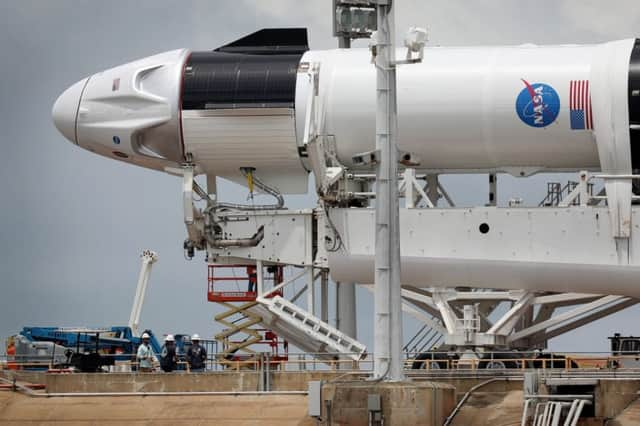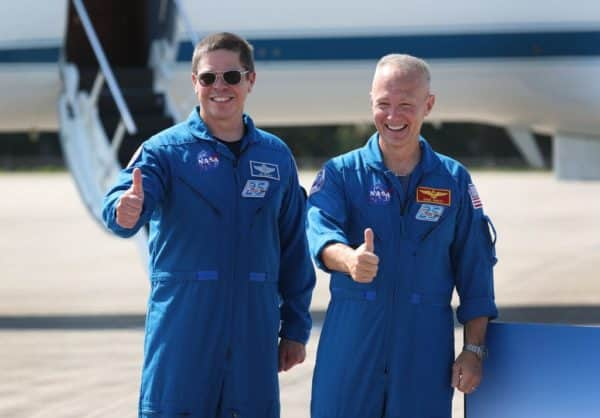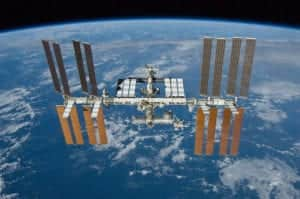SpaceX’s first-ever human flight launches this weekend - here's how to watch it live


NASA will make history this weekend when two astronauts jet off to the International Space Station.
Astronauts Doug Hurley and Bob Behnken are the central figures of the American space agency’s first manned mission since 2011 and the discontinuation of its Shuttle programme.
Advertisement
Hide AdAdvertisement
Hide AdThe mission – known as ‘Demo-2’ – is also notable for being the first undertaken by NASA to make use of a rocket and capsule system provided by a private company.
SpaceX – the American aerospace company founded by entrepreneur Elon Musk – is providing the SpaceX Falcon 9 rocket and Crew Dragon capsule used to transport the astronauts.
It's the first time the space transportation firm has launched a crew into space, though SpaceX does have plenty of experience launching satellites.
Demo-2 is a demonstration of SpaceX's ability to ferry astronauts to the space station and back safely; a successful mission will see the the Crew Dragon capsule certified by Nasa's Commercial Crew Programme for more long-term manned missions.
Advertisement
Hide AdAdvertisement
Hide AdYou’ll be able to witness the launch live through the wonders of the internet, and even see part of it yourself – if conditions are just right.
Here's everything you need to know:
What time is the launch?
Original plans had the two astronauts scheduled for liftoff from launch pad 39A on Wednesday 27 May.
But bad weather put an end to the launch with just 16 minutes to spare, as fears of a lightning strike forced SpaceX to call off the Falcon 9 mission.
NASA will take another run at the launch on Saturday 30 May, and the launch is scheduled to take place at 8.22pm UK time.
Advertisement
Hide AdAdvertisement
Hide AdWeather plays a big part in whether the launch will take place. Current forecasts predict a 40 per cent chance of favourable conditions, exactly the same forecast for the original day of the launch...
How will the launch work?
Hurley and Behnken’s journey into space will take around 10 minutes.
Once in orbit, the Crew Dragon capsule will separate from the second stage of the Falcon 9 rocket and travel at around 17,000mph before being in position to dock with the space station just under 24 hours later.
How can I watch the launch?


Due to the ongoing coronavirus pandemic, NASA has been urging the crowds that would usually turn up to witness such a launch first hand to stay at home.
Advertisement
Hide AdAdvertisement
Hide AdInstead, budding space enthusiasts from around the world will be able to watch the historic event streamed live through NASA’s website.
Is it safe?
A successful mission will see the the Crew Dragon capsule certified by Nasa's Commercial Crew Programme for more long-term manned missions, but NASA says ‘Demo-2’ is just that, a demonstration.
So will it go off without a hitch?
"NASA has been extremely rigorous in making sure that all the requirements are met, all the safety levels are where they should be,” former astronaut and consultant to SpaceX Garret Reisman told BBC News.
"It's because of this process, as long and as arduous as it has been, I'm confident my friends Bob and Doug are going to be okay.”
Advertisement
Hide AdAdvertisement
Hide AdAstronauts Hurley and Behnken were chosen for the mission in part because of their experience, with both having visited space before.
How will coronavirus affect the mission?


Of course, the exciting mission is all taken place against the backdrop of a planet ravaged by a global pandemic.
But perhaps surprisingly, the coronavirus outbreak has had little impact on a mission with thousands of intricate, moving parts.
Astronauts ordinarily go into quarantine prior to missions to ensure they carry no illnesses up to the space station, so prep for the launch has been “relatively normal”, according to Hurley.
Advertisement
Hide AdAdvertisement
Hide Ad"After all these years, we're kinda just used to all the poking and prodding and blood draws that come with all the other things that go with flying into space."
NASA has made special efforts to limit the number of people allowed to come into with the astronauts, and everyone involved in the mission is subject to regular Covid-19 testing.